
- Sephardic Balkans
JEWISH HERITAGE TOURS
- Jewish Heritage Tour of Montenegro, Albania, and Corfu (Greece)
- Jewish Heritage Tour of Bulgaria, North Macedonia, and Greece
- Jewish Heritage Tour of Romania, Serbia, and Szeged
- Jewish Heritage Tour of Croatia, Bosnia, Slovenia, and Trieste
- Bulgaria Gourmet ◆ The Food and Wine Tour
- Pictures from our Jewish Heritage Trips
- Meet Your Jewish Heritage Tour Leader
- Get in Touch
- Testimonials

Croatia Jewish Tour | Jewish Heritage Travel in Croatia
If you’re looking for a specialized, carefully tailored Jewish tour of Croatia, you’ve come to the right place. Our Jewish heritage tour of Croatia is part of our broader journey through the rich Jewish heritage of the Western Balkans . Our 12-day Jewish heritage travel itinerary takes you on an in-depth exploration of the rich Sephardic and Ashkenazi culture, history, and traditions of Bosnia, Croatia, Slovenia, and Trieste.
One notable highlight of our Croatian Jewish tour includes Dubrovnik , Croatia’s undisputed coastal gem. Part of our walking tour includes a visit of the Dubrovnik Jewish museum , housed in the enchanting 1532 Dubrovnik synagogue , the second-oldest active synagogue in Europe (after the one in Prague). Right next door to the synagogue, you may find hard to resist the temptations of a lovely small Judaica shop. In the 16 th and 17 th centuries, the most prominent Jewish family in Dubrovnik was that of the illustrious rabbi Aaron ben David ha-Koen (from Florence). Buried at Dubrovnik’s Jewish cemetery is rabbi Jacob Pardo (grandson of rabbi David Pardo of Sarajevo), who served the communities of Ragusa and Spalato (Split). We’ll walk along Dubrovnik’s Stradun thoroughfare, the town’s enchanting alleyways, and the romantic port. During your free time you can walk along the city walls, take a short boat ride to nearby Lokrum islet, or enjoy the charm of the old town.
Our drive along the gorgeously scenic Adriatic coast meanders through sun-drenched vineyards, craggy cliffs, medieval fortified towns, Franciscan monasteries, and oyster farms. Our next stop on our Croatian Jewish tour is the port city of Split , Dalmatia’s bustling capital and the second-largest city in Croatia.
Our Jewish tour of Split will take us up the steep steps of the spectacular 16 th -century Split synagogue . Members of the Split Jewish community gather regularly at the Jewish community center, also located on the synagogue premises, and you might very well strike up an informal conversation with a member of the community. As we walk the narrow streets of Split, we’ll go through the historic Jewish neighborhood, converted into a ghetto from the mid-1700s until Napoleon’s arrival in 1806. Romaniote Jews lived in nearby Salona (no connection to Salonica) in the 3 rd century. In the middle of the 7 th century they moved to the court of Diocletian, soon to become the town of Split. During the Middle Ages the Jewish merchants of Split and Ragusa (Dubrovnik) served as trade brokers between Dalmatia, Italy, and regions along the Danube. In the 16 th century there were two distinct Sephardi communities in Split: the Eastern/Levantine from Ottoman lands and the Western – or Ponentine – Sephardim from Italy. One of the most prominent Ashkenazi families were the Morpurgos of Maribor. The historic Morpurgo bookstore still stands in the heart of the old town (though currently closed). Probably Split’s most prominent Sephardic Jew in the 16 th century was Daniel Rodriguez . In 1592, he was able to establish a free port in Split, and a street bearing his name is located in the heart of the historic Jewish neighborhood. Our Split walking tour also includes Diocletian’s Palace , where menorah engravings are clearly visible on the walls. We will also stop by the fish market, walk up to the enchanting Jewish cemetery, and enjoy a panoramic vista of the city and its port.
The majority of Croatia’s Jews live, of course, in the nation’s capital, Zagreb , another important stop on our Croatia Jewish tour . The earliest Jewish settlers here date back to the 10th century and include two prominent Jewish emissaries, Mar Saul and Mar Joseph, to the king of the Khazars. In the late medieval period, Jews arrived from lands as disparate as Albania, Malta, France, Hungary, and Moravia. From the mid 18th century, the Jewish community was comprised of settlers from Hungary, Moravia, Bohemia. Today Zagreb is home to the country’s largest Jewish community, whose 1867 synagogue was demolished by the Ustashe in 1941. You are likely to fall in love with the city’s unique vibe, a particular blend of Central European and Mediterranean charm. Our walking tour of the city includes the iconic Jelačića Square, the Dolac marketplace, the historic 19th century Tkalčićeva street, the arrestingly baroque Upper Town, and much more.
Even though a central focus of our itinerary is the Jewish heritage of Croatia , our tour includes much more. Northwest of Split lies the fascinating historic city of Trogir , recognized by UNESCO for its complex of Romanesque, Baroque, Venetian, and Renaissance buildings. Located on an island just off the mainland, you can enjoy the spectacular Trogir cathedral , the charming cobblestoned alleys, and the old harbor. Our coastal drive continues through northern Dalmatia. Along the way lies the medieval town of Šibenik, site of the famed Cathedral of St James (built in 1432-1555). Further along the coast lies Dalmatia’s northern hub – Zadar . This charming seaside town with layers of Illyrian, Roman, Byzantine, and Venetian history. Zadar is also home to two unique sites: a Sea Organ emitting natural music generated by the movement of the sea; and the Sun Salutation installation which collects sunlight and then produces a hypnotic nighttime light show.
Croatia is equally famous for its impressive natural beauty. As we ride through central Croatia, or Croatia proper, you can take in the natural beauty of the country’s inland geography, dotted by mountain chains and castles perched on hilltops. The Plitvice Lakes are the most spectacular natural formation in the region – and arguably in the entire country. The natural park is one of Europe’s top UNESCO World Heritage sites. Plitvice comprises sixteen turquoise, crystal-clear lakes, a series of stunning waterfalls, dense forests, and a system of wooden bridges and boardwalks.
For a detailed, day-by-day itinerary of our Croatia Jewish tour , please send an email to [email protected] or fill out our contact form .
A note about our hotels: our detailed Croatia Jewish tour itinerary includes the full list of hotels. We stay in handpicked, top-notch, centrally-located, quality four-or-five-star hotels. So much so, that some of our luxury hotel choices even warrant a special word of warning. Our five-star boutique hotel in Dubrovnik, for example, is located in a serenely pristine bay, just a 10-minute ride from the hustle and bustle of Dubrovnik’s Old Town. After spending two nights in this idyllic location – watching the sun set into the orange-tinged waters of the Adriatic – you may find leaving a tad difficult. And as we cross the border into Slovenia, our five-star Ljubljana hotel is located in the very heart of the charming capital. Directly across the pedestrian street from it, though, lies possibly the most delicious hand-crafted chocolate shop in the whole of Slovenia, so enter at your own peril.
Our Croatia Jewish Heritage Itinerary at a glance ( contact us to request a detailed day-by-day itinerary):
Day 1: Dubrovnik
Late afternoon arrival in Dubrovnik after exploring for three days the Jewish heritage of Bosnia and Herzegovina. Overnight in a boutique five-star hotel in Dubrovnik.
Day 2: Dubrovnik city tour
We will explore the rich Jewish legacy of Dubrovnik and pay special attention to its sites of general interest. We will stop for a panoramic view of the old town. Our Jewish tour of Dubrovnik includes stops and the Dubrovnik synagogue and Jewish museum. As we walk along Stradun, the main pedestrian thoroughfare of the Old Town, we’ll talk about the maritime Republic of Ragusa, as Dubrovnik was known after it attained independence from Venice in the 1300s. Other Dubrovnik highlights include the city wall, the port, the Church of St Blaise, the Sponza Palace and the fort of St John. Overnight in a boutique five-star hotel in Dubrovnik.
Day 3: The Adriatic Coast — Split
Our drive along Dalmatia’s breathtaking southern Adriatic coast passes by medieval Ston , whose defense walls are sometimes likened to the Great Wall of China. The scenic region we’ll be traversing is home to sunny vineyards, Franciscan monasteries, craggy cliffs, and oyster farms. Our final destination today is Split , Dalmatia’s undisputed hub. After we check into our hotel, you will have some free time in the afternoon to start exploring what bustling Split has to offer. The Ivan Meštrović Gallery, for example, is dedicated to the work of Croatia’s internationally renowned sculptor. Overnight in centrally located hotel in Split.
Day 4: Split
Our Jewish tour of Split includes the synagogue and Jewish community center, the historic Jewish neighborhood, Dioclecian’s Palace with its fascinating menorah wall engravings, the Jewish cemetery, the Morpurgo bookstore, owned by one of the most prominent Jewish families, and much more. Overnight in centrally located hotel in Split.
Day 5: Split—Trogir—Zadar
Visit historic Trogir, a UNESCO world heritage site. Drive along the coast of northern Dalmatia, via Sibenik, to ancient Zadar (or Zara). After year of fighting over the city between Hungary and Venice, the Hungarian Kind Landislau sold the city to Venice for 100,000 ducats. Zadar is famous throughout Europe and beyond for its particularly spectacular sunset over the waters of the Adriatic. Not to be missed are also Zadar’s Sea Organ and Greeting to the Sun art installations. Overnight in boutique five-star hotel in Zadar.
Day 6: Plitvice Lakes—Zagreb
Our drive through central Croatia takes us to Croatia’s most stunning national park — the Plitvice Lakes. Take in the beauty of serene turquoise lakes, towering waterfalls, and fragrant pine and beech forests. We then continue on to Zagreb — Croatia’s vibrant capital. Overnight in centrally located five-star hotel in Zagreb.
Day 7: Zagreb Jewish Tour
We will start our day with a visit of Zagreb’s architecturally impressive Jewish cemetery, part of the city’s 1876 Mirogoj cemetery (the work of architect Hermann Bolle). We will also visit the Jewish community center, and the Jewish museum, and the site of the destroyed Zagreb synagogue. Other landmarks along our tour include the lively Dolac marketplace, the Upper Town, the Cathedral of the Assumption, the Church of St Mark, and the parliament building. We also highly recommend riding the funicular, and we may very well do so as a group.
Day 8: Slovenia and Trieste
Today we depart Croatia and continue our Jewish heritage tour in Slovenia and Trieste, where we will spend the last three days of our itinerary.
A bit of trivia from Jewish Croatia:
- David Schwartz (1850-1897), a Hungarian Jew who spent most of his life in Zagreb (known as Agram during the Hapsburg period), created an airship which was an early predecessor to the Zeppelin.
- Branko Lustig (1932-2019) was born in Osijek, Croatia, survived Auschwitz, and won an Oscar as one of the producers of Schindler’s List . (He then won a second Oscar for Gladiator .) It was on Lustig’s suggestion that Fiddler on the Roof was filmed in the Croatian village of Lekenik, outside of Zagreb.
- Sculptor Oscar Nemon (190-6-1985) was also born in Osijek, then part of Austria-Hungary. Best known for his sculptures of Churchill, he also sculpted portraits of Freud, Eisenhower, and members of the British royal family.
- Fiorello La Guardia traces his Sephardic roots, via Trieste, to the prominent Luzzatto Italian-Jewish family. He worked at the US consulate in Rijeka (Fiume) from 1903 to 1906.
- Prominent Zagreb Jews include the artist Oskar Hermann (1886-1974); pianist Julius Epstein (1832-1926); and Mavro (Moritz) Sachs (1817-1888), a prominent doctor, the founder of Croatian forensic medicine, and the first president of the Zagreb Jewish community. Sachs’s father, Mendel ben Elijahu, was a doctor in his own right and a mohel .
- Amato Lusitano was a prominent 16th-century Portuguese Jewish doctor who spent some time in Ragusa (Dubrovnik). Lusitano then relocated to Thessaloniki (Salonica), the Sephardic metropolis known as “The Jerusalem of the Balkans,” which became his final resting place. The rich history of Jewish Salonica is part of our Jewish heritage tour of Bulgaria, North Macedonia, and Greece .
- Another 16th-century Portuguese Jew to have lived in Dubrovnik for some fifty years is the celebrated humanist and poet Didacus Pyrrhus. Upon arrival to Dalmatian Ragusa, Pyrrhus, a crypto-Jew, officially returned to Judaism and adopted the name Isaiah Kohen.
- Rabbi Josea Jacobi (1841-1925) became the chief rabbi of Zagreb in 1867. Jacobi was an important educator and activist. He wrote his doctorate on the status of the Jewish woman based on the biblical view of marriage. In 1885 he delivered the first sermon in Croatian (rather than German). In 1919, Friedrich Pops and Hugo Spitzer, Jacobi’s son-in-law, founded the Yugoslav Federation of Jewish Communities.
- Diocletian’s Palace in Split, dating back to the early 4th century CE, contained a synagogue on its premises, referred to in documents as the Great Synagogue.
- The Jews of Ragusa (Dubrovnik) were expelled from the city in 1515, but allowed to return in 1532, following Ottoman intervention.
- About 50 miles north of Zagreb, the Jewish community of the town of Varaždin was established around the middle of the 18th century. From 1812 to 1849, the community’s rabbi was Yekutiel Hirschenstein, a prominent advocate of proto-Zionism.
- Zagreb-born Rudolf Lubinski was one of Croatia’s most prominent art nouveau architects. He designed the imposing 1930 Sephardic Synagogue in Sarajevo, Il Kal Grande.
Join Our Mailing List
Thank you for joining our mailing list.
You are using an outdated browser. Please upgrade your browser to improve your experience.
- Passover Programs 2025
- Passover Programs Bahamas
- Passover Programs in Brazil
- Passover Programs in Canada
- Passover Programs Caribbean
- Passover Programs in Colombia
- Passover Programs in Costa Rica
- Passover Programs in Cyprus
- Passover in the Czech Republic
- Passover Programs in France
- Passover Programs in Georgia
- Passover Programs in Greece
- Passover Programs in Italy
- Passover Programs in Portugal
- Passover Programs in Romania
- Passover Programs in Spain
- Passover Programs in Switzerland
- Passover Programs in the United Kingdom
- Passover Programs in Israel
- Passover Programs in Mexico
- Passover Programs in Morocco
- Passover Programs in Panama
- Passover Programs in South Africa
- Passover Programs in Thailand
- Passover in Dubai & The UAE
- Passover Programs in Arizona
- Passover Programs in California
- Passover Programs in Colorado
- Passover Programs in Connecticut
- Passover Programs in Florida
- Passover Programs in Hawaii
- Passover Programs in Maryland
- Passover Programs in Nevada
- Passover Programs in New Jersey
- Passover Programs in New York
- Passover Programs in Utah
- Passover Programs in Vietnam
- Kosher Summer Vacations 2024
- Kosher Cruises
- Kosher Hotels Year Round
- Kosher / Heritage Tours
- Kosher Villa & Apartment Rentals
- Shavuot Programs
- Dubai Kosher Vacations
- Kosher Sukkot Programs
- Kosher Rosh Hashanah
- Kosher Winter Sun Vacations
- Kosher Ski & Winter Vacations
- Kosher & Jewish in...
- Kosher & Jewish Near me
- Kosher Eateries
- Kosher & Jofy* Hotels
- Kosher & Jofy* Rentals
- Kosher Policy
- Synagogues & Minyanim
- Update The Directory
- Shabbat Times
- Kosher Travel Digest
- Destinations Blog
- Passover Program Blog
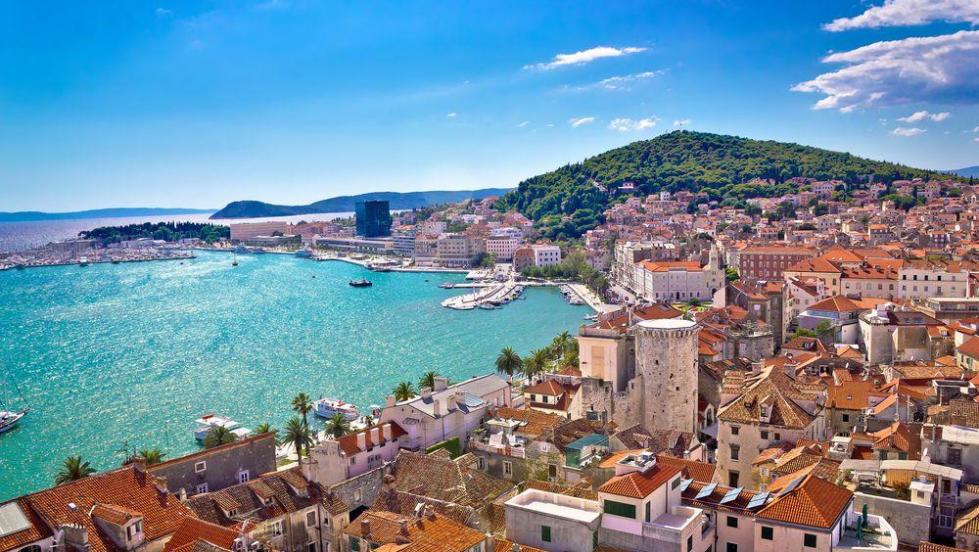
Popular Places In Croatia
Are you looking for kosher eatery or jewish poi near you, about croatia.
Croatia is an Eastern European country with a long coastline on the Adriatic Sea. Encompassing more than a thousand islands, it's also crossed by the Dinaric Alps. Its inland capital, Zagreb, is distinguished by its medieval Gornji Grad (Upper Town) and diverse museums. The major coastal city Dubrovnik has massive 16th-century walls encircling an Old Town with Gothic and Renaissance buildings. The Croats arrived in the area of present-day Croatia during the early part of the 7th century AD. They organised the state into two duchies by the 9th century. Tomislav became the first king by 925, elevating Croatia to the status of a kingdom. Most of Croatia has a moderately warm and rainy continental climate. Mean monthly temperature ranges between −3 °C (27 °F) (in January) and 18 °C (64 °F) (in July). Tourism is a significant source of revenue during the summer. The bulk of the tourist industry is concentrated along the Adriatic Sea coast. Opatija was the first holiday resort since the middle of the 19th century. By the 1890s, it became one of the most significant European health resorts. Later a number of resorts sprang up along the coast and islands, offering services ranging from mass tourism to catering and various niche markets, the most significant being nautical tourism, as there are numerous marinas with more than 16 thousand berths, cultural tourism relying on appeal of medieval coastal cities and numerous cultural events taking place during the summer. Inland areas offer mountain resorts, agrotourism and spas. Zagreb is also a significant tourist destination, rivalling major coastal cities and resorts.
The Best Of Croatia
Are you a croatia kosher establishment or tour operator, jewish history, poi & kosher establishments in croatia.
Three quarters of Croatia's 2,000 Jews live in the capital of Zagreb. There are small communities in Osijek, Rijeka, Split, and Dubrovnik. Although intermarriage has been widespread, most offspring of such unions have a strong sense of Jewish identity. Jews arrived in Croatia with the Roman armies, and there are remains of a Jewish cemetery in Solin (near Split) dating back to the 3rd century. That community ceased to exist in 641, when Solin was destroyed. Jews lived in Zagreb in the 13th and 14th centuries. However, Jews were expelled from Croatia proper and from Slavonia in 1456 and did not return until the end of the 18th century, by which time the territory was ruled by the Hapsburgs. After World War I, upon the establishment of an independent Yugoslavia incorporating Croatia some 20,000 Jews lived in Croatia. After the 2nd World War, some of the survivors returned; the Jewish community was reconstituted and Jewish life resumed. The Federation of Jewish Communities is responsible for Jewish religious and cultural life in Croatia. The Community building in Zagreb contains a synagogue, an art gallery, a Holocaust research and documentation centre and a Jewish library named after Rabbi Lavoslav Sik of Zagreb, who perished in Auschwitz. There are no kosher restaurants in Croatia but the Bet Israel Community annually publishes a list of available kosher products. Check out our blog post The Croatian Chronicles: Journey through Time and Beauty to help you plan your kosher vacation to Croatia.
What Is *JOFY?
JOFY, or "Jewish Observant Friendly" Establishments are lodging establishments offering special services for Jewish Observant guests such as Shabbat meals, accommodation on lower floors and regular keys for the rooms. It can also be a NON KOSHER establishment located in walking distance from the local Shul, community or kosher restaurants area.
Please note - *JOFY does NOT mean that KOSHER food is served on the premises!
- {{field.title}}
- Advertising Terms
- Passover Programs
- Programs Reviews
- Privacy Policy
- Terms of Use
Lets Be Social
- Totally Jewish Travel on Facebook
- Totally Jewish Travel on Twitter
- Totally Jewish Travel on Instagram

We specialize in unique, exclusive, personalized travel planning to Croatia and its surrounding countries. We design individualized journeys, small group tours, deluxe cruises and exceptional excursions, suited to each client based on years of personal experience, ongoing research, relationships, and professional expertise.
Latest posts.

Witness the Blossoming of Croatia in Spring

Insider Access to Luxury Croatia Vacations
Find your destination.

Taking A Croatia Jewish Heritage Trip With Adventures Croatia
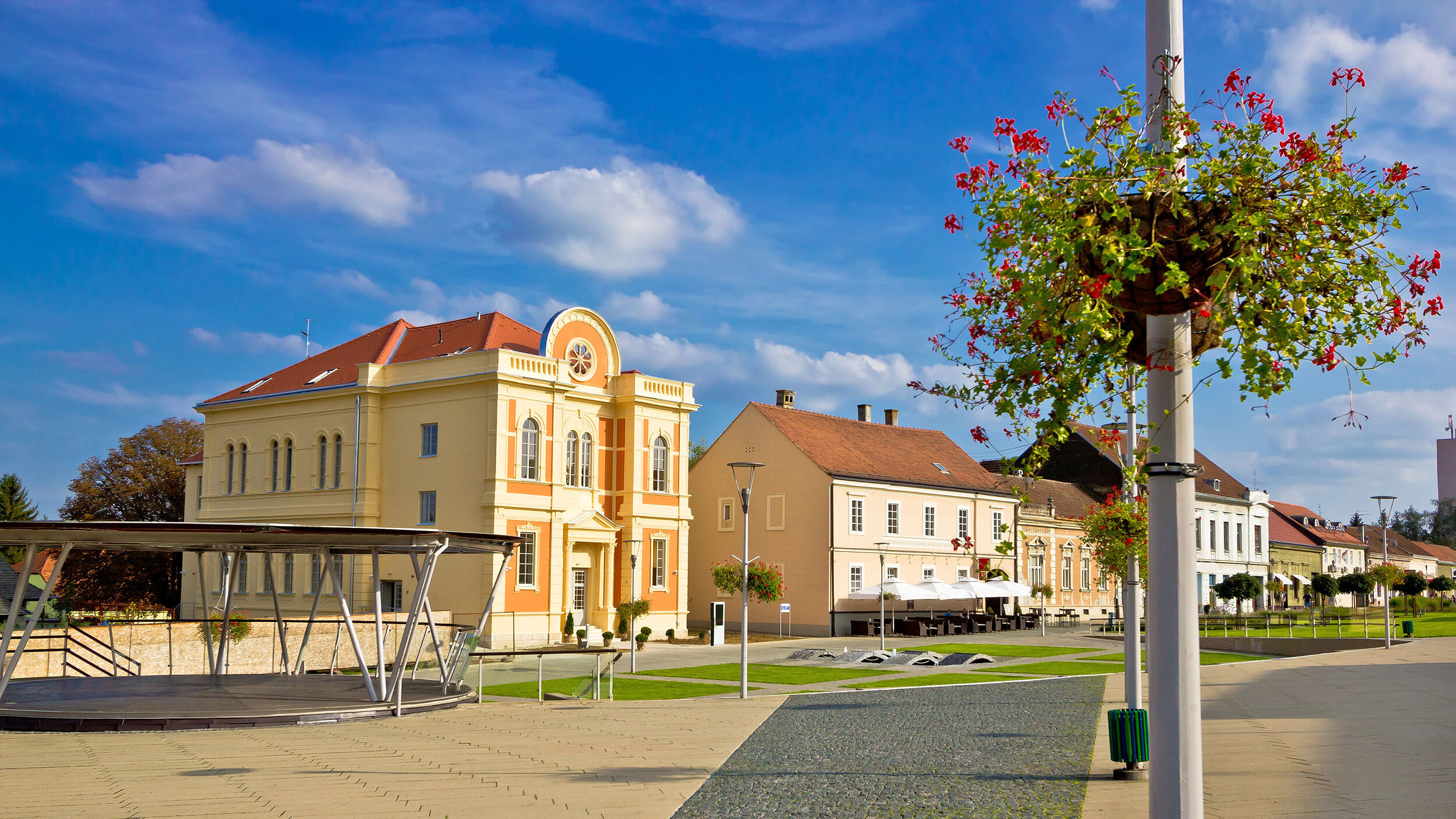
Have you ever considered going on a Croatia Jewish Heritage Trip? Croatia has a deep connection with the Jewish community, one that dates back centuries. Whilst it has not always been a pleasant history, over the most recent years, the Jewish community has begun to flourish with many museums, synagogues and ancient historical ruins holding a testament to the long Jewish heritage that lies within the country’s roots.
The Jewish community in Croatia
When we think of the Jewish community in Croatia nowadays, the largest hub is located in Zagreb. But in the past, the Jewish community was spread across the region and mostly divided into two different parts: the in-land region which saw the Jewish community vastly scattered throughout Austro-Hungarian rule.
The other region was the Dalmatian coast where the Jewish community was much denser but thought to have been around since ancient times. In fact, the Jewish community in Croatia can be dated as far back as the 3rd century AD, although little is known of the community until the 10th and 15th centuries.
The impacts of the World Wars and the creation of Yugoslavia
When the area that is now known as Croatia became part of Yugoslavia following World War I, the Jewish community faced a big threat from fascist parties. The community, which had just over 20,000 people within it on the eve of World War II was almost entirely destroyed in The Holocaust.
By the end of World War II, the Croatian Jewish population was greatly reduced to around 5,000. Many of the survivors chose to settle elsewhere, especially as post-war communist rule took over the state of Yugoslavia. Many of the Jewish community chose to settle in Israel while some of the 2,500 live today in Croatia. However, this is an estimate and it is believed that the number of Croatian Jews is larger, as more than 80 per cent of the 1,500 members of Zagreb’s Jewish community were either born in mixed marriages or are married to a non-Jew.
The breakdown of Yugoslavia
Following Croatia’s secession from Yugoslavia in 1991, the new governing body showed large support for the Jewish community in Croatia to counter accusations of extreme nationalism. As a result, aid was provided to the Jewish community to rebuild their heritage within the country. One of these projects included the reconstruction of the Zagreb Jewish community building which was part of a terrorist attack back in 1991.
Most of the 90s saw a shift in Jewish life in Croatia with much of the community gaining a stronger identity within Croatian society.

Taking a Croatia Jewish heritage trip
If you’re looking for specialized, Jewish heritage tours around Croatia, then you have come to the right place. Join us here at Adventures Croatia for a trip through time as we take you on a journey to uncover the true Croatian Jewish heritage that exists within this region.
When taking a heritage tour around Croatia, you can discover the rich history of the Jewish community in Croatia and its surrounding countries first-hand – learn how the Jewish people came to settle in the country, the struggles the Jewish people have faced and how the community operates now in the modern day.
The best places to experience Jewish heritage in Croatia are:
Zagreb’s connection with the Jewish community dates back centuries. In the 13th and 14th centuries, the Jewish community in Zagreb was led by “Magistratus Judaeorum.” But in 1456, the Jewish people along with most non-Catholic Croats were forced out during the rule of the first Habsburg monarchs.
After the Edict of Tolerance was issued in 1782 by Habsburg Emperor Joseph II, the Jewish people began settling in the Zagreb area once again rebuilding the city’s connection to the Jewish Community.
Highlights of this city’s connection to Jewish heritage include the Mirogoj cemetery (the Jewish part is well preserved among the rare ones in Central Europe), Jewish Community Centre and the Zagreb Synagogue.
Dubrovnik
The city of Dubrovnik is a must-stop destination for anyone planning to take a Croatia Jewish heritage trip. The best spots to visit for Jewish heritage include the old Jewish Cemetery “Bet Haim”, Ulica Žudioska (Jewish Street) and the Old City where you can see the Jewish Fountain, Franciscan Monastery with the third oldest pharmacy in Europe, Rector’s Palace, and the Cathedral.
No Jewish heritage trip around Croatia is complete without a visit to the Jewish Ghetto in Dubrovnik and the Synagogue of Dubrovnik which is the third oldest synagogue in Europe, built back in 1408 and is considered one of the most cherished sites of Sephardic culture in the world.
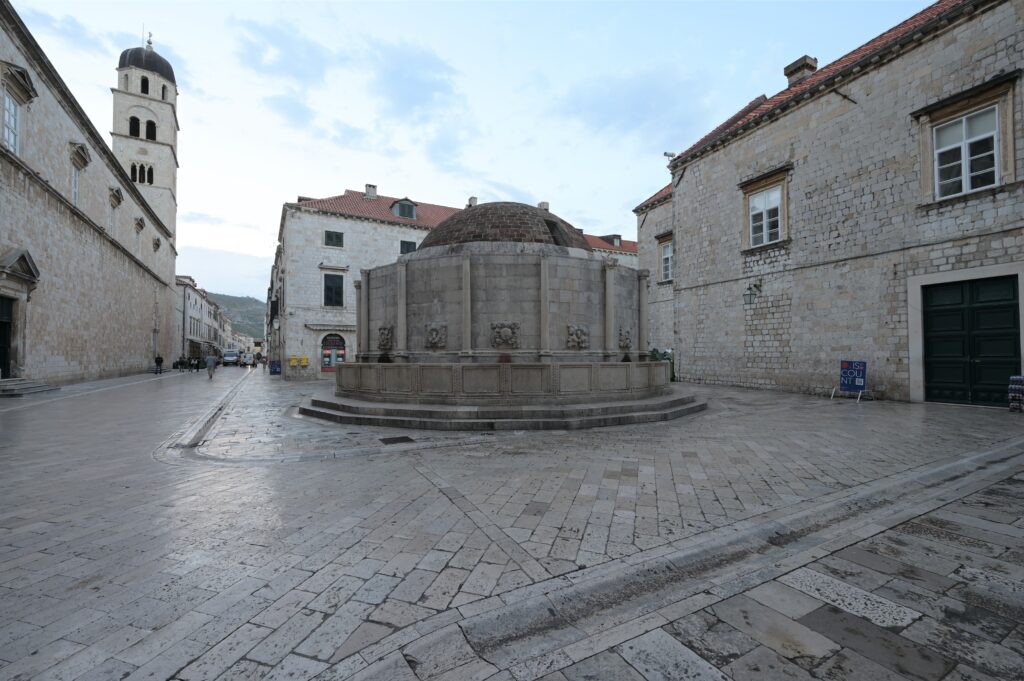
The Dalmatian coast was once a cultural hub for the Jewish community, much of which can be seen today in the ancient historical buildings and ruins which remain.
The most noteworthy of these are the restored Synagogue of Split, located along the narrow street called Židovski prolaz (Jewish Passage), the Jewish Ghetto, and Morpurgo Library. Visit the Jewish Community Center in Split. Whilst visiting Split we recommend taking a drive to Marjan Hill for a visit to the Old Jewish Cemetery dating from 1537, where you can also enjoy a magnificent view of the town of Split.
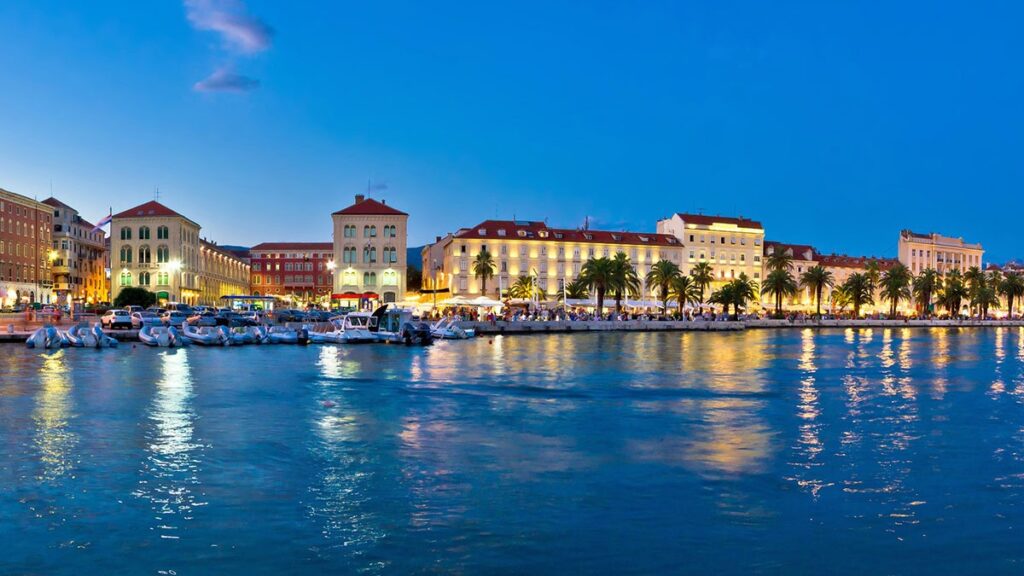
Jewish Heritage Private Tour – Balkans
Our Jewish Heritage Private Tour through the Balkans takes travelers on a 13-day tour that spans the Croatian coast and out across the Croatian border to visit Jewish heritage sites in Slovenia, Montenegro and Bosnia & Herzegovina. This exclusive tour runs between late May – September and will take travelers to visit the following locations:
ZAGREB – BLED – LJUBLJANA – CROATIAN ZAGORJE – PLITVICE LAKES NATIONAL PARK – SPLIT – MOSTAR – SARAJEVO – DUBROVNIK – MONTENEGRO
Each of these destinations has a deep connection to the Jewish community and is wrapped in Croatian Jewish heritage and traditions. If there is a specific location you would like to visit on this tour, speak to our travel specialists today.
At Adventures Croatia we also offer the opportunity to create custom tour itineraries for Croatia – if there is a destination you would like to visit, get in touch with our team who will be more than happy to work with you to create a completely bespoke tour tailored to your vacation preferences.
For the ultimate Croatia Jewish heritage trip, look no further. Book your space on our exclusive Jewish Heritage Private Tour now.
Adventures Croatia
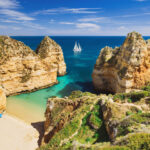
Small Group Trip 2023 – Spain and Portugal Tour
The ultimate festivals and events in croatia 2023 guide – part 2.
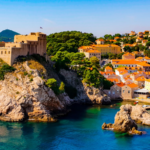
Privacy Overview
Expedia Rewards is now One Key™
Earn onekeycash when you sign in and book an activity.

Check availability
- About this activity
Private Jewish Heritage Walking Tour in Dubrovnik with Local Expert
- Free cancellation available
- Mobile voucher
- Instant confirmation
Unwind the mysterious secrets of Dubrovnik’s extremely rich Jewish heritage on an informative and interesting private 2-hour walking tour and learn a whole new side to the UNESCO-listed magical Old Town. Get an insight into the turbulent history of Dubrovnik’s Jewish population as you tour through famous landmarks like the grand Jewish fountain, the historic remains of the old Jewish ghetto, and one of Europe’s most ancient synagogues. Eventually, discover more about the marvels of Jewish life in the 16th century by the oppression of the horrendous World War 2 and visit the Jewish Museum.
● 2-hour walking tour of the Jewish heritage
● Investigate Dubrovnik’s UNESCO-listed Old Town with a specialist guide
● Visit Europe’s most pristine synagogue and roam the streets of the previous Jewish ghetto
● Uncover the history of the Jewish community at the Jewish Museum
Activity location
- Dubrovnik, Croatia, Croatia
Meeting/Redemption Point
- 1 Brsalje ulica
- 20000, Dubrovnik, Dubrovačko-neretvanska županija, Croatia
- Sat, May 4 -
- Sun, May 5 $269
- Mon, May 6 $269
- Tue, May 7 $269
- Wed, May 8 $269
- Thu, May 9 $269
- Fri, May 10 $269
- Sat, May 11 $269
- Sun, May 12 $269
- Mon, May 13 $269
- Tue, May 14 $269
- Wed, May 15 $269
- Thu, May 16 $269
- Fri, May 17 $269
- Sat, May 18 $269
- Activity duration is 2 hours 2h 2h

What's included, what's not
- What's included What's included Iconic places for photoshoot
- What's included What's included Must see and off the beaten path
- What's included What's included Customizable itinerary
- What's included What's included Expert advice where to go and what to do after the tour
- What's included What's included All Fees and Taxes
- What's included What's included Friendly local guide
- What's excluded What's excluded Transportation to/from attractions
- What's excluded What's excluded Food and drinks
- What's excluded What's excluded Gratuities (optional)
Know before you book
- Infants and small children can ride in a pram or stroller
- Public transportation options are available nearby
- Travelers should have at least a moderate level of physical fitness
Activity itinerary
- Admission ticket not included
Best Deals on Things to Do
Top experiences in dubrovnik.
Jewish Tour In Split

- See all photos

Similar Experiences

Most Recent: Reviews ordered by most recent publish date in descending order.
Detailed Reviews: Reviews ordered by recency and descriptiveness of user-identified themes such as waiting time, length of visit, general tips, and location information.
JEWISH TOUR IN SPLIT - All You Need to Know BEFORE You Go
Jewish Tour In Split

- See all photos

Similar Experiences

Most Recent: Reviews ordered by most recent publish date in descending order.
Detailed Reviews: Reviews ordered by recency and descriptiveness of user-identified themes such as waiting time, length of visit, general tips, and location information.
Jewish Tour In Split - All You Need to Know BEFORE You Go (2024)
Trending Topics:
- Say Kaddish Daily
Welcome to The Hub for online Jewish classes and events. Find an upcoming event hosted by Jewish organizations across the world, or explore our on-demand section to view recordings of past events.
The Jews of Croatia Virtual Tour
Hosted By: Baltimore Zionist District
Join the BZD and tour guide, Evgenia Kempinski, on a Virtual Tour of The Jews of Croatia – Croatia, is a beautiful country on the shore of the Adriatic Sea and one of the most desirable holiday destinations. A land full of beautiful beaches and lakes, with National Parks and fresh air. A whole universe of lush green areas and breathtaking sunsets. The best collection of breath taking islands, delicious food, warm people, Italian-influenced architecture, and rich history.
The event listed here is hosted by a third party. My Jewish Learning/70 Faces Media is not responsible for its content or for errors in the listing.
Never miss an event!
Sign up to receive daily events in your inbox
Related events
Two people, one womb: the jews of italy.
Hosted by: Qesher
A Year of Music and Food in Jewish Italy
Jewish heritage across the balkans: a journey through history and culture (part 1 of 4 croatia).
Hosted by: Orange County Community Scholar Program (CSP)
Discover More

Rosh Hashanah
Rosh Hashanah 101
The Jewish New Year is a time of rejoicing and serious introspection.

Where to Stream Yom Kippur Services for Free
Where to find a free online service for the Day of Atonement.

Modern Israel
Modern Israel at a Glance
An overview of the Jewish state and its many accomplishments and challenges.
- LET'S TALK
- LET'S EAT
- FAMILY & EDUCATION
- SOCIAL & PERSONAL
- JEWISH WORDS
- JEWISH HOW TOS
- RABBI I HAVE A PROBLEM
- EDUCATIONAL
- PROFESSIONAL
- THE FRESSER
- THE SCHMOOZE
Sign up to The JC newsletter
Uncovering the centuries in split.
Venture beyond the Roman highlights to discover one of Croatia’s oldest Jewish communities

BY Rupert Parker

I'm exploring the cavernous empty space under the city streets of Split, its walls white bare and unadorned, when — to my surprise — I stumble across an outline of a menorah, scratched into the stone blocks supporting the huge weight of what was once Roman Emperor Diocletian’s palace above.
There are a few more to find, evidence of the early presence of Jews in the city, who used these eastern vaults as a place of worship.
Like many visitors to Croatia, I’ve never stayed in Split, just passed through on the way to the country’s lovely islands, but of course that’s been my mistake.
After all, it’s Croatia’s second city and of great historical importance, having grown out of a Roman palace built by Emperor Diocletian in 295CE.
It was meant as his retirement home, but he died not long after he moved in. Other Roman rulers used it over the years afterwards, but in the 7th century, people fleeing from nearby Salona, including Jews, sought protection behind its massive walls.

split-avery-meeker-3KBdXYMYPIU-unsplash
Split waterfront (Photo: Unsplash)
They never left. Now, packed inside its narrow streets are more than 200 buildings including churches, chapels, cafés and restaurants, while the palace’s southern wall became Split’s attractive seafront Riva, lined with palm trees.
Here, the Bronze Gate is the main entrance and this gives access to the vaulted palace basement where goods were stored. These days it’s a huge empty space exactly mirroring the imperial living quarters that stood above.
In the 5th century, Christians destroyed the Emperor’s sarcophagus and converted his tomb into the octagonal Cathedral of Saint Domnius.
It’s named after one of Diocletian’s Christian martyrs and still preserves its original Roman dimensions. The Temple of Jupiter became the cathedral’s baptistry and retains the barrel-vaulted ceiling and decorative frieze of the original building, although a bronze John the Baptist has replaced the statue of Jupiter.
The city’s earliest Jewish inhabitants constructed a synagogue in the southern part of the palace and, until the 16th century, that part of the city was known simply as Synagogue. It was destroyed by a fire in 1507, but a replacement was built into the western wall of the palace a few years later by Jews escaping the Inquisition in Spain and Portugal.

varos-split-old-city-kiki-siepel-aXGHjfqEqvg-unsplash
Buildings in Split's old city (Photo: Unsplash)
Spanning the second floor of two medieval houses, it has been recently restored and is the world’s second-oldest Sephardic synagogue still functioning (the oldest one is in Dubrovnik).
In 1573, a Jewish cemetery was approved and built on Marjan Hill, which overlooks the city. It contains around 700 tombstones, some with Sephardic script and more recent ones in Italian. The last graves date from the start of the Second World War. The cemetery entrance is located beside a house that once functioned as a mikve, transformed today into a café.
These days the Jewish community numbers around 100 people and although the synagogue does not have a permanent rabbi, religious and social events are held regularly.
It seems that wherever you turn in Split, you’re confronted with history — not only its Jewish past but the chance to discover other chapters from a past spanning over two millennia.
You can easily spend a few days wandering around, soaking up the atmosphere and visiting the city’s many cafés, bars and restaurants. At every turn you’re faced with fragments of antique architecture, rescued and repurposed.
But it’s also worth venturing out in the surrounding area. High on a rocky outcrop at 360 metres up, around seven miles north-east of the city, Klis Fortress has guarded the Dalmatian frontier for more than 2,000 years.

klis-fortress-piotr-musiol-2mSf6yIIn5E-unsplash
Klis Fortress (Photo: Unsplash)
Built by the ancient Illyrian Dalmatae tribe, it was taken over and enlarged by the Romans. After the fall of the empire it became a royal castle, seat of many Croatian kings, before passing between Ottomans, Venetians and finally Austrians — then, most recently, becoming a location for Game of Thrones, where it was used to depict the fictional city of Meereen.
Cobbled walkways lead you up to the defensive positions, where there are glorious views over to the sea and the countryside behind. One remnant of the Turkish occupation is the mosque, topped by a dome, which is now a Catholic church. Inside is a small museum, with displays of arms and uniforms, and a display detailing the history of the castle.
The extensive ruins of Salona are scattered on a hillside below. Originally a Greek settlement, it was occupied by the Romans in 78BCE and they made it their capital of Dalmatia.
It grew to become the fourth-largest city in the Roman Empire with a population of around 60,000. Churches were built here, after Emperor Constantine legalised Christianity, but in 614CE it was attacked by Slavs and Avars and gradually abandoned.
Numerous archaeological finds testify to the Jewish presence in Salona, including a Jewish pendant, ceramic oil lamps and a fragment of a Jewish sarcophagus now displayed in the Archaeological Museum of Split.
Further excavations also suggest the existence of a synagogue dating back to the time of Diocletian, but it’s a sprawling site and only a fraction has so far been excavated.

Salona Amphitheatre CREDIT Rupert Parker
Salona amphitheatre (Photo: Rupert Parker)
You can still walk on sections of the old city above the field and olive groves, with highlights including Manastirine, a necropolis for Christian martyrs, clustered around the ruins of a 5th-century basilica, the public baths and an aqueduct. There’s also an amphitheatre, built in the 2nd century to seat 60,000 spectators.
Around 17 miles from Split, along the coast near the airport, is the Unesco World Heritage-listed, perfectly preserved medieval town of Trogir. Originally founded by the Greeks in the 3rd century BCE, it was taken over by the Romans but flourished under Venetian rule. It sits on an oval island, surrounded by water on all sides, which allowed it to maintain a degree of autonomy over the centuries.
The best way of getting here is by a short boat ride from Split itself. Inside the walls, a labyrinth of cobbled alleys, crammed with palaces, leads to a central square dominated by the Cathedral of St Lawrence.
It was built between the 13th and 15th centuries and it’s well worth climbing the bell tower to get an overview of the old town. Opposite is the 15th-century town hall, complete with clock tower and classical columns.
If you fancy more island hopping, Hvar is only an hour from Split by fast ferry too. The island’s capital is one of the most glamorous of the Adriatic’s historic towns: these days luxury yachts disgorge the rich and famous, although in medieval times, it was a refuge for pirates until the Venetians took it over in 1240.

hvar-mana5280-c7o4DKx6tQM-unsplash
Hvar Castle (Photo: Unsplash)
The historic centre is pedestrianised with a long promenade winding around the sea front, while above the town sits the Venetian fortress, gazing out over the ancient stone houses around the marina and to the Pakleni islands beyond.
Stari Grad, the original capital on the north coast, is an unassuming little place and often overlooked but it’s one of Croatia’s oldest towns, dating back to around 385 BCE when it started out as a Greek colony called Faros. With its low stone houses clustered around small squares, it’s here that you’ll find an authentic taste of local life.
And while the Greeks, Romans, Turks, Venetians and Austrians are long since gone, it’s not hard to understand why so many have coveted this lovely corner of Europe over the millennia — and why you should follow in their footsteps.
Getting There
Flights from Heathrow to Split cost from around £180 with Croatia Airlines .
For more information about the city and places to stay, go to visitsplit.com
Like this? Sign up for more with our JC Life newsletter here .
From fabulous recipes to parenting tips, travel and West End entertainment; insightful interviews and much more: there’s more to the JC than news !

Marvellous Montenegro

Nicaragua: Land of lakes and volcanoes

JC Stays: Hotel Sans Souci, Vienna

It’s a kind of magic – Orlando beyond the theme parks

Czech it out – the best city breaks in Czechia apart from Prague
Have the JC delivered to your door

Want more from the JC?
To continue reading, we just need a few details....
©2024 The Jewish Chronicle
- Advertising
- Terms & Conditions
- Cookie Policy
- Privacy policy
Built into the western wall of Diocletian's Palace , Split's synagogue is the third-oldest synagogue in Europe that's still in use. Created out of two medieval houses in the 16th century, in what was then the Jewish ghetto , it attained its current appearance around 1728.
Split's Jewish community, which can be traced back to Roman times, has around 100 members today. As there is no permanent rabbi, the community is more traditional than religious. Split’s first Jewish wedding for 70 years was held at the synagogue in September 2012, the first official ceremony since WWII. The previous wedding was in 1943, a year after the synagogue had been pillaged by Italian fascists.
Židovski prolaz 1
Get In Touch
021-345 672
https://www.zost.hr
Lonely Planet's must-see attractions

Diocletian’s Palace
Taking up a prime harborside position, the extraordinary complex of Diocletian's Palace is one of the most imposing ancient Roman structures in existence…
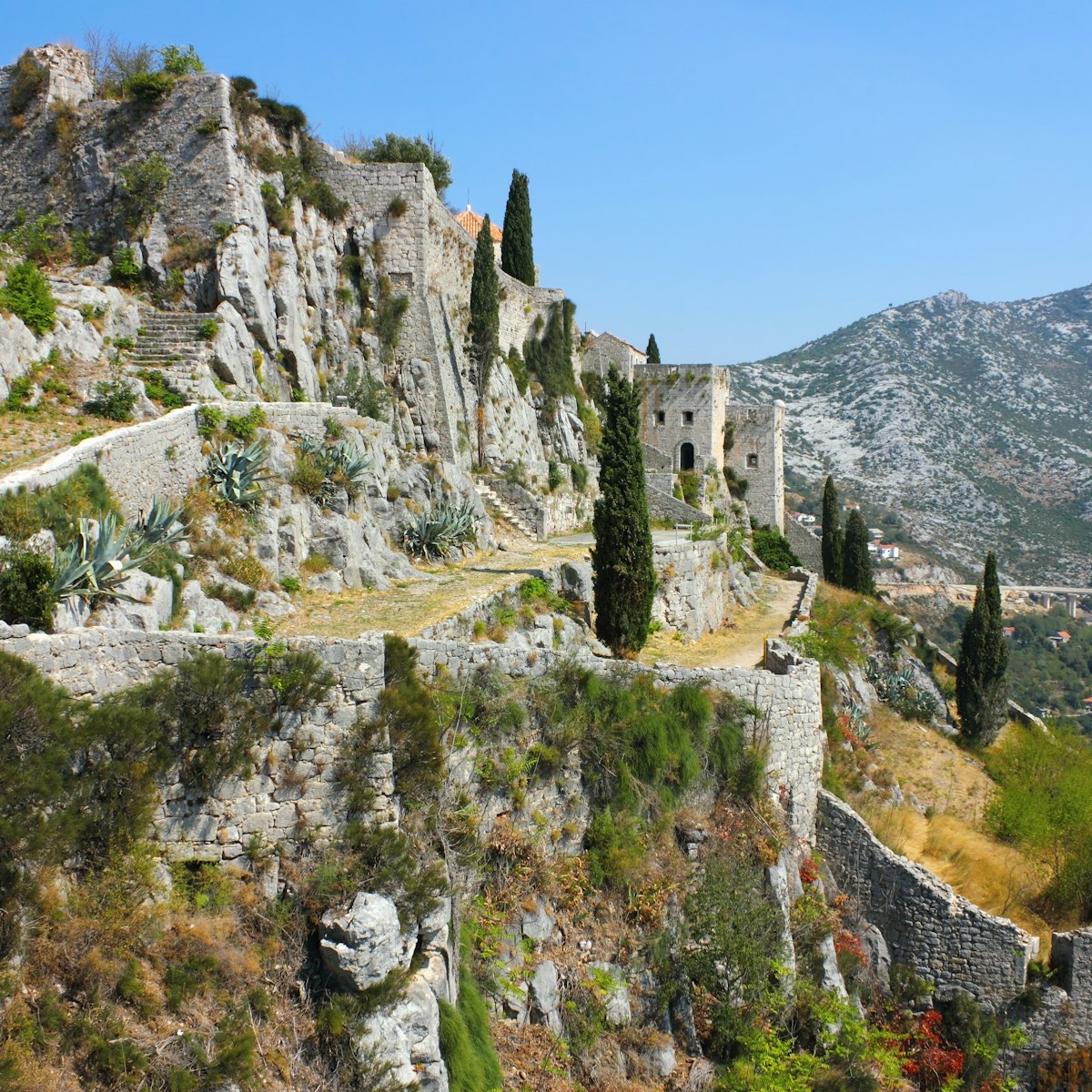
Klis Fortress
Controlling the valley leading into Split, the imposing Klis Fortress spreads along a limestone bluff, reaching 1260ft (385m) at its highest point. Its…
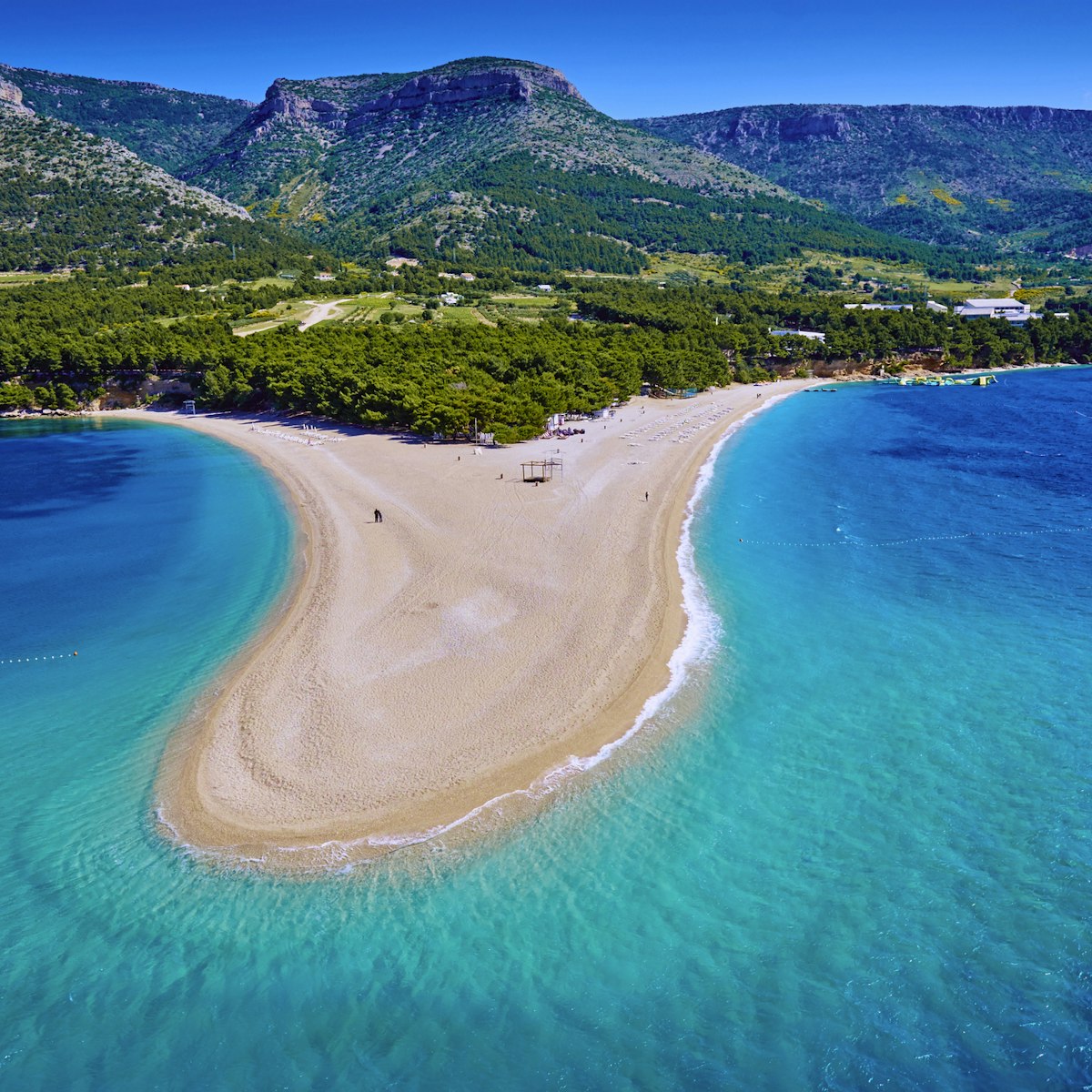
19.98 MILES
Zlatni Rat, Croatia's most photographed beach, extends like a tongue into the sea for about a quarter of a mile (400m). Despite the hype and constant…
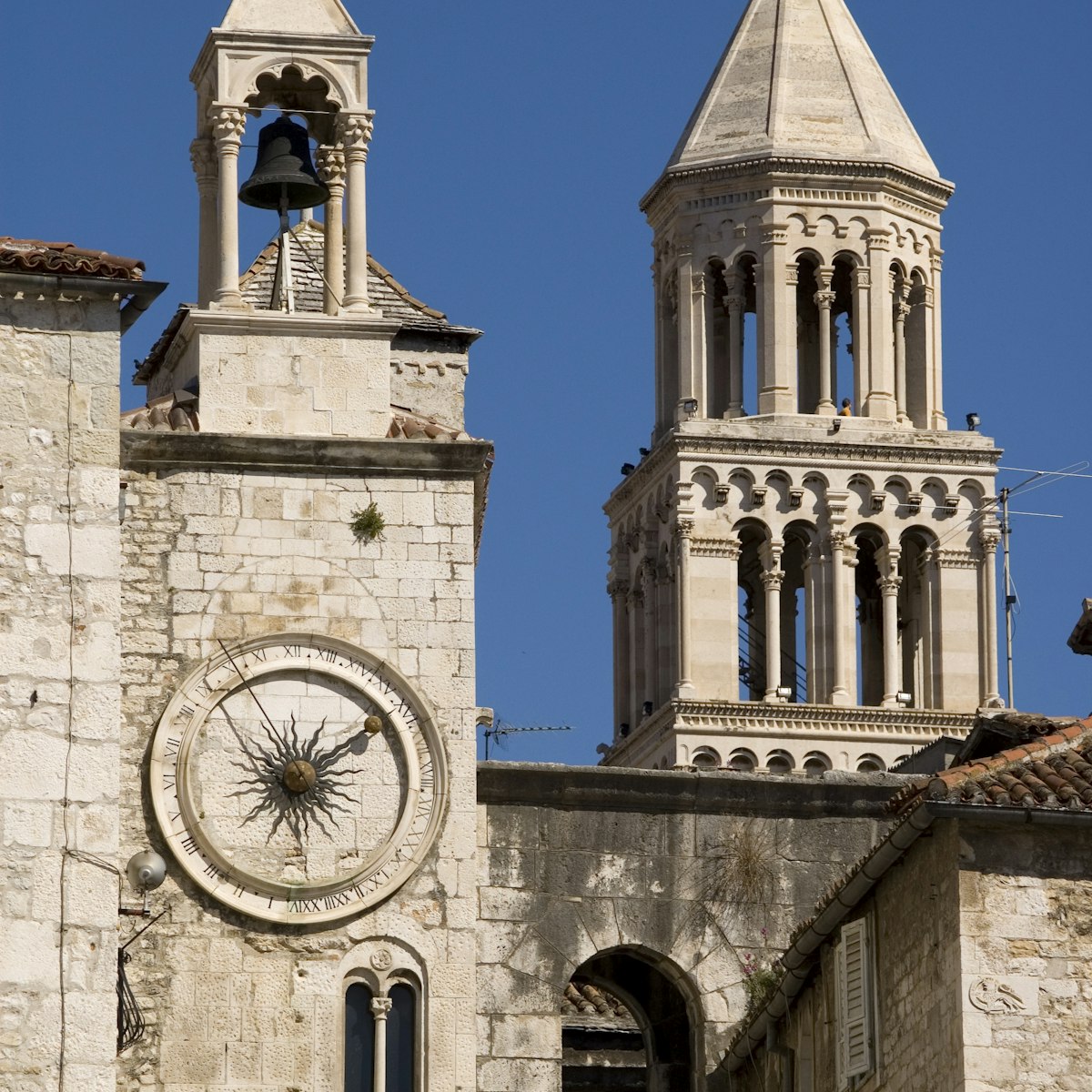
Cathedral of St Domnius
Split’s octagonal cathedral is one of the best-preserved ancient Roman buildings still standing. It was built as a mausoleum for Diocletian, the last…
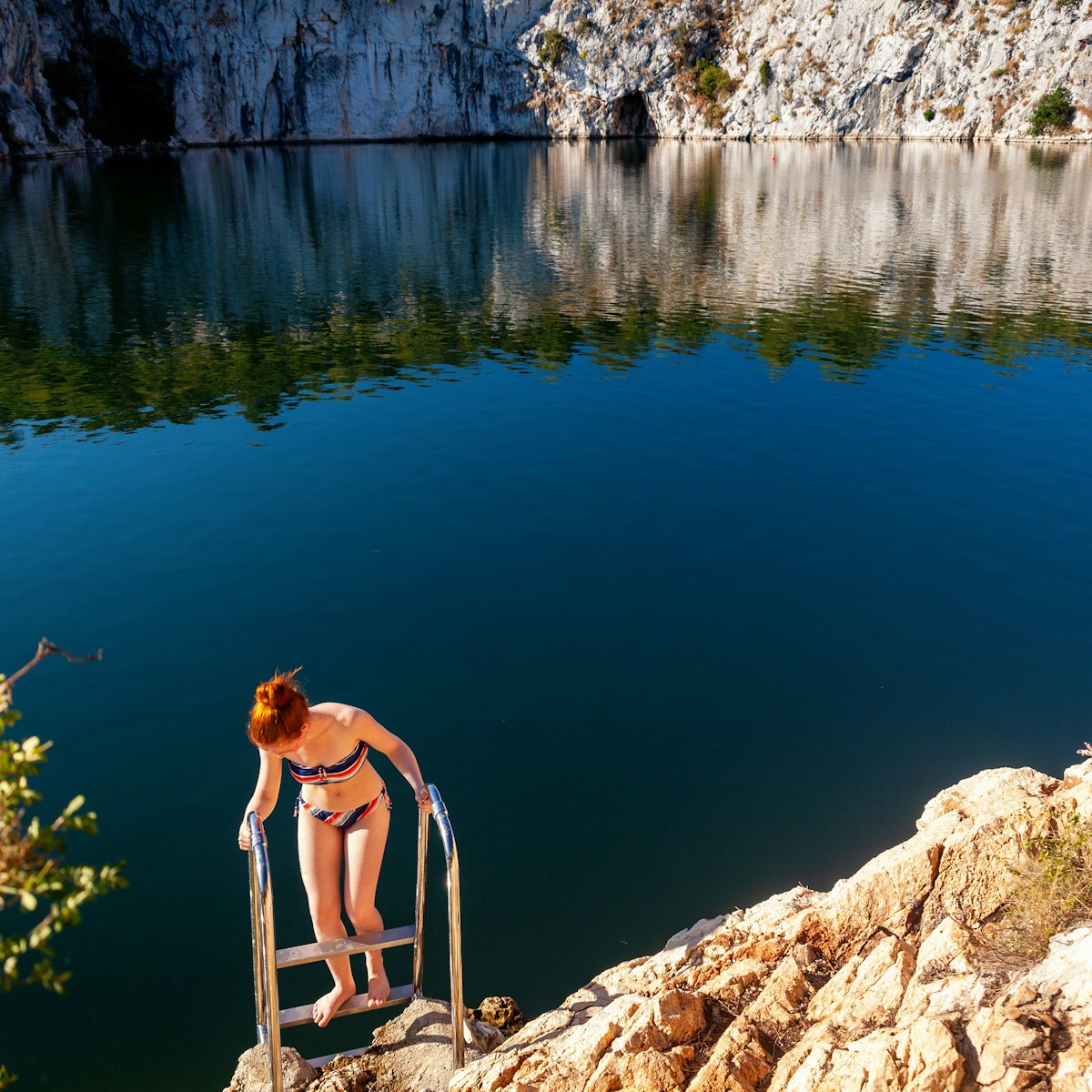
Dragon's Eye Lake
One of Northern Dalmatia's most striking natural phenomena, Dragon's Eye Lake is a 10,000-sq-metre oval encircled by 4m- to 24m-high cliffs. Connected to…
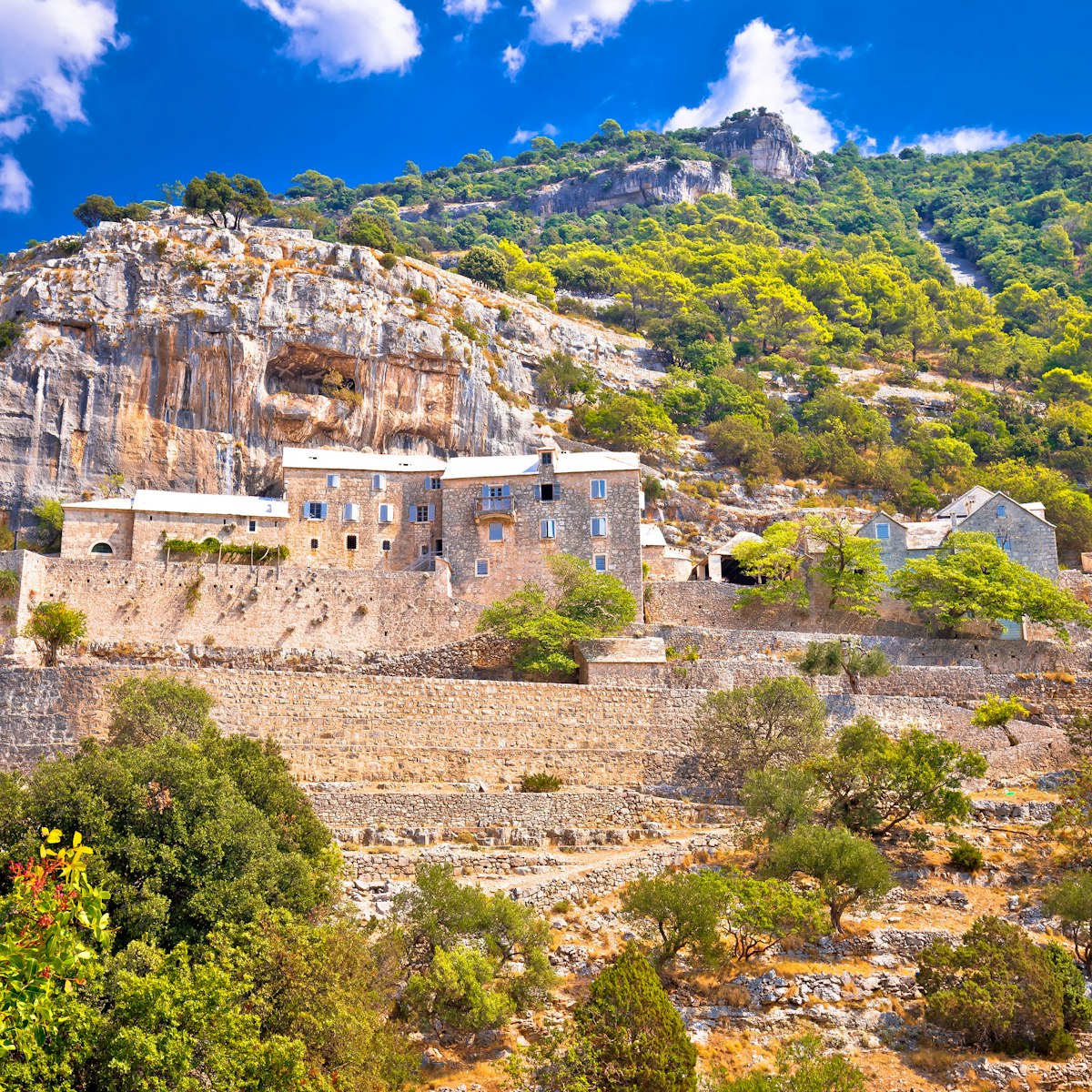
Blaca Hermitage
15.58 MILES
Things can't have looked too different on the approach to this remote mountain cleft when a small group of priests and their servants, on the run from the…

St Lawrence's Cathedral
Trogir's show-stopping attraction is its three-naved Venetian cathedral, one of the finest architectural works in Croatia, built between the 13th and 15th…

Vidova Gora
18.28 MILES
At 778m, Vidova Gora is the highest point on the Adriatic Islands and the view from the top is astounding. From here the entire island of Hvar is spread…
Nearby Split attractions
1 . Iron Gate
The high arches of this large double gate lead from Diocletian's Palace to the main city square.
2 . Temple of Jupiter
Although it's now the cathedral's baptistery, this wonderfully intact building was originally an ancient Roman temple dedicated to the king of the gods…
3 . Golden Gate
The biggest and grandest of the city gates, this was the main processional entrance into Diocletian's Palace. Metal bars once blocked the outer entrance,…
4 . Gallery of Fine Arts
Housed in a building that was the city’s first hospital (1792), this gallery exhibits 400 works of art spanning 700 years. Upstairs is the permanent…
5 . Diocletian’s Palace
6 . Split City Museum
Built by Juraj Dalmatinac in the 15th century for one of the many noblemen who lived within the old town, the Large Papalić Palace is considered a fine…
7 . New Research on Split Cathedral
Situated opposite the Cathedral of St Domnius, this exhibition features large-scale photos of architectural features of the cathedral along with technical…
8 . Grgur Ninski statue
Sculpted by Ivan Meštrović, this gargantuan statue is one of the defining images of Split. Its subject, a 10th-century Croatian bishop, fought for the…

- Our Mission & Values
- Staff & Board
- Privacy Policy
- World Monuments Watch
- 2022 World Monuments Watch
- Featured Projects
- Explore Sites & Projects
- Attend an Event
- Travel with WMF
- Jewish Heritage Program
- Ukraine Heritage Response Fund
- Heritage from Home
- Support Our Work
- More Ways to Give
- International Council
- Planned Giving
- Institutional Giving
- Crisis Response
Stay connected
Split synagogue.
The city of Split has a long history of Jewish presence, dating back to the seventh century after nearby Salona (now Solin) was destroyed by the Avars, forcing a community that had been in existence there since the third century a.d. to flee and find protection within Diocletian’s fortified palace. Only a few menorahs inscribed on stone blocks of Diocletian’s Palace testify to the early presence of Jews in Split.
The Jewish community grew substantially in the late fifteenth and early sixteenth centuries as waves of Sephardic Jewish refugees fled Portugal, Spain, and Italy during the Inquisition. Although Split’s Jewish community never exceeded more than a few hundred members, they had a considerable influence on the local economy. Daniel Rodriguez, a prominent Jew in the sixteenth century, established a free port in Split and many became wealthy from exporting wares from the Ottoman territories in the Balkans to Venice.
The first synagogue of Split, most likely dating from Roman times, was destroyed in a great fire in 1507. Soon after that, in another part of the city that later became the Jewish ghetto, a new synagogue was created by combining and converting the second floors of two medieval houses.
Having been severely damaged during the Second World War, with much of the Jewish community migrating to Israel in the following years, Split’s synagogue and Jewish community have seen a revival in activities since Croatia gained its independence. Split is the centerpiece of a collection of important places that recognize Split’s Jewish past, including the historic Jewish cemetery on the Marjan hill; Morpurgo, one of the oldest operating bookstores in Europe, which was established by an important Jewish family; and the streets of the former Jewish ghetto, where one can see a collection of voids in doorways that once held Mezuzzot.
Conservation and interpretation of Split Synagogue
Due to exterior damage, water had seeped into Split Synagogue’s structure and had caused plaster deterioration within the interior sanctuary space. With support and guidance from WMF’s Jewish Heritage Program, a conservation project during 2014 addressed the south and north facades, repairing damages to the masonry, repointing the mortar joints, and the overall cleaning of the facades. Wooden shutters that were significantly deteriorated were replaced, while those still in good condition were repainted for protection. New copper rainwater gutters, downspouts, and drip edges were installed to protect the building from water seepage.
During the project, the team uncovered a fragment of a Roman stele with part of its inscription still intact, as well as fragments of marble door jambs of an early medieval building that that were used as window surrounds on the third story of the synagogue’s north façade.
In 2016 and 2017, WMF worked with representatives of the synagogue to develop an on-site and online exhibition for Split Synagogue, to interpret the history of the synagogue and the Jewish community it has served over the centuries. The exhibition Jews in Split exists as an educational tool for Split’s local community and visitors.
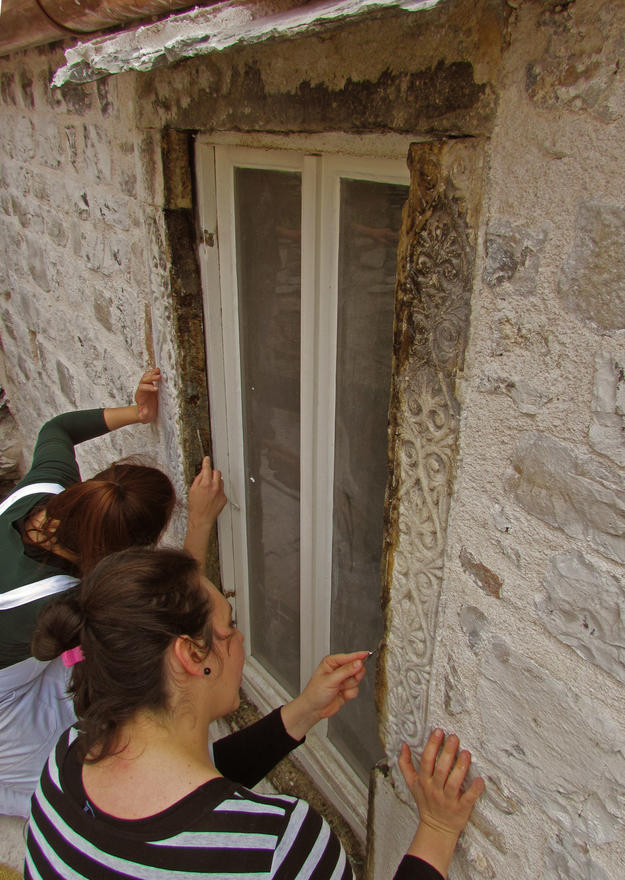
Publications
In the media.
Join us in safeguarding significant places.
Explore More Sites
- International edition
- Australia edition
- Europe edition
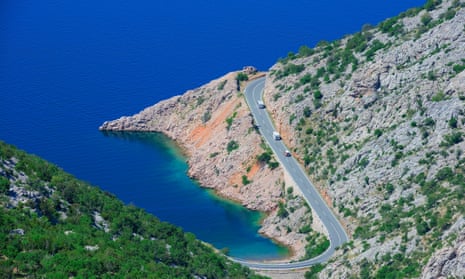
‘Slow travel at its most joyous’: our three-week road trip to Croatia
Rather than bomb down motorways for marathon stretches, the idea was to see new things along the way, such as the great lakes of Germany and a Renaissance town in Italy
H ow far would you go – and how long would you take – to avoid flying and thoroughly embrace the idea of slow travel? In my case, it was 3,167 miles over three weeks. For nearly a decade I had wanted to do a road trip to Croatia, and to get as much out of the journey as the destination itself. Rather than bomb down the motorway for marathon stretches, the idea was to slow down and see new things.
It seemed we had barely rolled off Le Shuttle (the name Eurotunnel reverted to last spring) before my husband and I were out of France and bouncing along Belgium’s bumpy motorways. After a six-hour drive, Germany’s oldest city, Trier, made a pleasant overnight stop, the reconstructed gothic Hauptmarkt square bathed in late afternoon sunlight. Its summer pop-up bar taught me that the Mosel wine region makes some very drinkable rosés.
Germany proved to be one of those places where I couldn’t stop making mental notes on things to come back and explore; and the night we spent in Munich made me wonder why I had never visited before. It wasn’t just handsome Marienplatz and its neo-gothic new town hall; the food shops and stalls on Viktualienmarkt made me seriously hungry.
Rather than stay in the old town, we picked a hotel in Werksviertel, a few S-Bahn stops away. This former industrial area is now full of container bars, sleek hotels (including ours, the Adina , which has a fabulous roof terrace), concert venues and a huge ferris wheel.
Another lovely surprise – the first of many the next day – was Chiemsee, whose waters we glimpsed from the autobahn to Austria. Bavaria’s largest lake shot up my “How on earth have I never heard of this place and can I please come back?” list.
Our entry into Italy’s snappily named Friuli-Venezia-Giulia region coincided nicely with lunchtime. Determined to avoid a dire motorway meal, we found a restaurant in tiny Tarvisio where pizzas came smothered with local San Daniele ham. Later, in Udine, we watched a beautiful Renaissance town wake from its afternoon snooze and come alive with the evening passeggiata . An aperitivo in Piazza Giacomo Matteotti, a wander under Piazza della Libertà’s porticos, and a dinner of spaghetti alle vongole is what you want after a five-hour drive. The next day, when we caught our first glimpse of the Adriatic on our way to Trieste and stopped for lunch surrounded by Habsburg stateliness, I was making more plans to return.
Our Italian interlude was so delightful I was almost sorry to whiz through Slovenia and finally into Croatia. My goal was my parents’ region of Lika, in the west of the country, above Zadar, but for once I wasn’t visiting the inland area where my family came from. When I was writing my Croatia travelogue, My Family and Other Enemies , in 2022, I lamented how – with the exception of Plitvice Lakes national park and its surroundings – much of this beautiful region is being left behind in Croatia’s tourism boom. My intention this time was to explore Lika’s western half, where tourism has more of a foothold.

It’s easy to find a bucolic bolthole in Lika’s karst mountain landscape of forests, rivers and lakes. An online trawl came up with a wooden cottage outside the village of Perušić. Named IV-AN after its genial owner from nearby Gospić, the cottage was backed by forests and fronted by farmland. The only sounds were birdsong, crickets and, come evening, sizzling meats on the barbecue. My new obsession, the Merlin Bird ID app, picked up the calls of nuthatches, nightingales, owls and shrikes.
The lane behind led to Grabovača cave park , whose Samograd cave had been on my must-see list. Unfortunately, I was recovering from a knee injury and couldn’t tackle the slippery steps. The same went for other activities that are turning Lika into a giant adventure playground – rafting and kayaking on the Gacka and Lika Rivers and Lake Krušćica, mountain biking, quad biking and even just plain old hiking. But Lika has other tricks up its sleeve.
One of the most captivating is in the village of Kuterevo, about 45 minutes’ drive from our cottage. Since 2002, the Bear Refuge has been looking after orphaned brown bears whose mothers had been killed, or who had been rescued from illegal zoos, all kept in spacious enclosures. It’s free to enter, but volunteer wardens are happy to take donations. When it’s hot, the bears lurk in the shade, but on this rainy morning they were all ambling about. The most poignant was Bruno, who arrived in 2019 from an illegal zoo, and he still hasn’t lost his captivity habit of pacing back and forth.

Apart from Plitvice, Lika’s other claim to fame is the birthplace of Serbian-American inventor Nikola Tesla, whose village of Smiljan has spawned a mini-industry. At the Memorial Center Nikola Tesla you don’t have to be a science buff to enjoy the demonstration of the Tesla coil, the film about the inventor’s life, or the exhibits in the house where he was born – beside the 1765 church where Tesla’s father was parish priest.
Smiljan is only three miles from Lika’s county seat, Gospić, and its Lika Museum , housed in an attractive 18th-century building. Among the medieval artefacts and Habsburg furniture is a really good art gallery with an exhibition of early 20th-century photographs. Those photos had me spellbound: my paternal grandfather was Gospić’s railway stationmaster briefly, until his untimely death in 1933, and this gave me a glimpse into his world.
after newsletter promotion
Western Lika’s other major town is Otočac, in the Gacka valley, the focus of much of the area’s outdoor pursuits. Most of the River Gacka is below ground, but what can be seen in this broad valley is serenely beautiful, shaded by trees and full of brown trout. If I couldn’t go kayaking, at least I could find a riverside restaurant – Bistro Ribić and Bumerang were particularly good – and we feasted on two whole grilled trout for €12.
Two of the three major sources that feed into the Gacka are only a few miles apart, both wondrous little watery worlds. At Majerovo Vrilo, old restored mill houses (one still milling flour) form a bridge across the mini rapids; behind them the clear water lay still and blue, with reeds and lily pads adding touches of green to match the forested hills behind. A handful of wooden houses overlook this idyllic spot, and I envied their occupants on their waterside terraces. It was a similar sight at Tonkovićevo Vrilo, where more of this sparkling water was burbling under wooden bridges.

In a region that still shows traces of war and continues to lose its young people to emigration, it was pleasing to see hikers, cyclists, anglers and kayakers enjoying this vast landscape. And one young man was there to keep Lika’s spirit flowing, literally. Ivan Vlainić, 31, is bucking the trend for leaving the countryside, having moved from Zagreb to become the fifth generation to run the family brandy business, Stilanova Lika .
“More young people like me have realised that we can make a living here,” he told me during a tasting of his smooth brandies in the restored family house outside Perušić.
Soon, however, we were leaving Lika to meander along the Istrian coast back towards Italy and a last-minute decision to visit Venice. That night, our simple one-star hotel on Italy’s Lake Iseo astonished us with its five-star view of the sun setting on Monte Isola. A few days in the French Alps and a final night in Burgundy rounded off our road trip. My brain was a jumble of languages, my phone overflowing with photos. It was slow travel at its most joyous, and worth the wait.
Travel from Folkestone to Calais was provided by Le Shuttle (crossings from £87 each way). Seven nights’ self-catering at IV-AN cost £ 600 . Adina Apartment hotel in Munich has self-catering apartments from € 152 a night. Hotel Allegria in Udine has doubles from € 139 B&B . Mary Novakovich’s My Family and Other Enemie s: Life and Travels in Croatia’s Hinterland (Bradt Travel Guides, £9.99) is available from guardianbookshop.com
- Croatia holidays
- Europe holidays
- Italy holidays
- Germany holidays
- Green travel
Most viewed

COMMENTS
Our 12-day Jewish heritage travel itinerary takes you on an in-depth exploration of the rich Sephardic and Ashkenazi culture, history, and traditions of Bosnia, Croatia, Slovenia, and Trieste. One notable highlight of our Croatian Jewish tour includes Dubrovnik, Croatia's undisputed coastal gem. Part of our walking tour includes a visit of ...
Most of Croatia has a moderately warm and rainy continental climate. Mean monthly temperature ranges between −3 °C (27 °F) (in January) and 18 °C (64 °F) (in July). Tourism is a significant source of revenue during the summer. The bulk of the tourist industry is concentrated along the Adriatic Sea coast.
Jewish Heritage Private Tour - Balkans . Our Jewish Heritage Private Tour through the Balkans takes travelers on a 13-day tour that spans the Croatian coast and out across the Croatian border to visit Jewish heritage sites in Slovenia, Montenegro and Bosnia & Herzegovina. This exclusive tour runs between late May - September and will take travelers to visit the following locations:
About. This is the only Jewish Heritage tour in Split conducted by a Jewish guide. It is a walking tour of Split's general and Jewish sights. It includes the visit to the synagogue, the former Jewish ghetto, the old Jewish cemetery on Marjan hill, and other general sights in Split...the tour can be flexible and entirely adjusted to your wishes.
Discover and book Dubrovnik Jewish Heritage Private Walking Tour on Tripadvisor. Help. If you have questions about this tour or need help making your booking, we'd be happy to help. Just call the number below and reference the product code: 28647P4. +1 855 275 5071.
Discover and book Jewish Heritage & Diocletian's Palace Private Split Tour on Tripadvisor. Help. If you have questions about this tour or need help making your booking, we'd be happy to help. Just call the number below and reference the product code: 69807P5. +1 855 275 5071.
This sightseeing tour will focus on the history of Jewish community in Dubrovnik, from the 14th century until the present day. Discover the Jewish monuments around the city - Jewish fountain on the Pile plateau, Jewish street - later ghetto in the 16th century and over stone fragments in the norther part of the city.
2-hour walking tour of the Jewish heritage Investigate Dubrovnik's UNESCO-listed Old Town with a specialist guide ... The Jewish Museum has occupied the first floor of the synagogue and is the only existing one in Croatia. Located in one of the many small streets of the Old Town of Dubrovnik, it is connected to a neighboring building that has ...
Prominent Jews played a pivotal role in the rich history of Split, Croatia, as Jewish heritage has been woven into the city's intricate tapestry right from its founding. By joining our private tour, you will be impressed by the amazing evolution of the imperial palace of Diocletian, a Roman emperor, into a thriving city, with the Jewish ...
During the tour you'll also get to speak to local Jewish people and hear of their culture and experiences here in Split. This tour is also a fantastic way to sightsee as your guide leads you to popular landmarks such as the Jewish cemetery, the city Synagogue, the temple of Jupiter, the statue of Grgur Ninski, amongst many others.
About. This is the only Jewish Heritage tour in Split conducted by a Jewish guide. It is a walking tour of Split's general and Jewish sights. It includes the visit to the synagogue, the former Jewish ghetto, the old Jewish cemetery on Marjan hill, and other general sights in Split...the tour can be flexible and entirely adjusted to your wishes.
Historical & Heritage Tours. Open now. 12:00 AM - 11:59 PM. Write a review. See all photos. About. This is the only Jewish Heritage tour in Split conducted by a Jewish guide. It is a walking tour of Split's general and Jewish sights. It includes the visit to the synagogue, the former Jewish ghetto, the old Jewish cemetery on Marjan hill, and ...
We are so fortunate to have found Vesna. My wife and I like to learn about the Jewish community wherever we travel, but the agency we used do not offer such a tour in Dubrovnik. A
Synagogue & Jewish Museum. Dubrovnik, Croatia, Europe. Dubrovnik. With a religious practice that can be traced back to the 14th century, this is said to be the second-oldest still-functioning synagogue in Europe and the oldest Sephardic one. Sitting on a street that was once the Jewish ghetto, the synagogue also houses a small museum exhibiting ...
Lea is an outstanding guide with an excellent knowledge of history especially with regards to the Jewish history of Croatia and surrounding regions. She is articulate, interesting and connects with her audience in a most engaging manner. Her tour of the Diocletian palace was most interesting and informative. ... We had an excellent Jewish tour ...
The history of the Jews in Croatia dates back to at least the 3rd century, although little is known of the community until the 10th and 15th centuries. According to the 1931 census, the community numbered 21,505 members, and it is estimated that on the eve of the Second World War the population was around 25,000 people. Most of the population was murdered during the Holocaust that took place ...
Join the BZD and tour guide, Evgenia Kempinski, on a Virtual Tour of The Jews of Croatia - Croatia, is a beautiful country on the shore of the Adriatic Sea and one of the most desirable holiday destinations. A land full of beautiful beaches and lakes, with National Parks and fresh air. A whole universe of lush green areas and breathtaking ...
The city's earliest Jewish inhabitants constructed a synagogue in the southern part of the palace and, until the 16th century, that part of the city was known simply as Synagogue. It was ...
The Jewish population increased in Croatia for a century and a half. In 1456, it was decided that the number of Jews was too large, and they were terrorized and then finally expelled. After 1526 and for the next 200 years, there are no records of Jewish existence in Croatia. In the 1700s, Jews began to immigrate back to Croatia.
Dubrovnik Jewish Heritage Private Walking Tour. 23. Historical Tours. from. $152.74. per group (up to 8) Blue Cave Premium Half-Day Tour from Dubrovnik Old Town. 150. Jet Boat Rentals.
Synagogue. Built into the western wall of Diocletian's Palace, Split's synagogue is the third-oldest synagogue in Europe that's still in use. Created out of two medieval houses in the 16th century, in what was then the Jewish ghetto, it attained its current appearance around 1728. Split's Jewish community, which can be traced back to Roman ...
In 2016 and 2017, WMF worked with representatives of the synagogue to develop an on-site and online exhibition for Split Synagogue, to interpret the history of the synagogue and the Jewish community it has served over the centuries. The exhibition Jews in Split exists as an educational tool for Split's local community and visitors.
A few days in the French Alps and a final night in Burgundy rounded off our road trip. My brain was a jumble of languages, my phone overflowing with photos. It was slow travel at its most joyous ...
Jewish Tour In Split: Jewish Tour with Lea Altarac - See 112 traveler reviews, 36 candid photos, and great deals for Split, Croatia, at Tripadvisor.